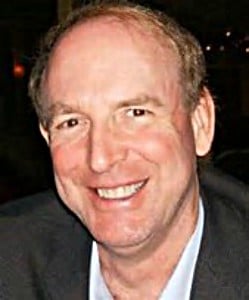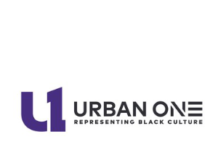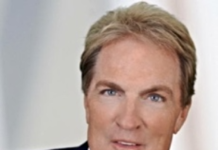
(By Reed Bunzel) Those of us who have been lucky enough to work in this industry recall with great fondness our first connection with the AM/FM dial — whether it was listening to a transistor radio tucked under the covers on a cold winter’s night or the soundtrack playing in the background while seeking paradise by the dashboard light.
There was something magical about that electronic device that carried us far away, maybe to the pounding surf of a Southern California beach or to a sock hop that was shakin’ and rollin’ in Philadelphia. Now, as we approach the 100th anniversary of commercial radio, we can truly see how radio has opened a window to our cultural heart and soul.
There’s no way to express how fortunate I have been to be just a small a part of those hundred years. I still remember spinning my first record on WBOR-FM in Brunswick, ME when I was a freshman at Bowdoin College. The very first thing I did once my family drove off after orientation was to march across the campus and land an airshift. By all accounts (mine included) I was a disaster, but the bug had bitten and would never let go. I had no way of knowing at the time that a fun and rewarding career would arise from the ashes of my on-air miscues.
Much of that career was spent working with Eric Rhoads, a true entrepreneur and visionary whose dedication to radio is only rivaled by his love of family and great art. He and I were introduced by our mutual friend Dwight Case at the NAB Radio Show in Washington, DC in 1988, not long after he had purchased The Pulse of Radio. The following week we discussed the possibility of me serving as his first editor-in-chief, but we both agreed that the timing was not quite right. We revisited the issue several years later, when he was “reinventing” Pulse to launch as a new publication titled Radio Ink. This time the sun and stars were aligned, and I was on hand to see the first issue roll off the presses.
I owe a great deal to Eric, and to Radio Ink. They both allowed me to expand my personal horizons as I helped to provide quality information vital to virtually everyone within a radio station. The product was personality-driven from the start; Eric inherently knew the value of the front cover and almost never varied in his mandate that we highlight the most successful, newsworthy, and extraordinary people touching the radio industry at the time.
During my years with Radio Ink — which came in two distinct shifts — I came to know every power player in the industry. These men and women shared their business insights, opened up candidly about the medium’s successes and shortcomings, and promoted its many benefits. They advocated for radio’s tremendous potential, recalled its marvelous past, and recounted their own personal love affair with the medium. All the while I not only was able to share their thoughts with the magazine’s readers, but I also absorbed what came between the lines. It was an experience I will never forget.
Of course, Radio Ink’s trademark feature — other than its industry lists — was its cover interview. During my tenure with the magazine I was fortunate to conduct over 100 of these, almost all of them with an industry “mover and shaker.” This was how I gained entry into the offices and minds of such folks (in no particular order) as Randy Michaels, John Hogan, Jeff Smulyan, Dan Mason, Paul Fiddick, Robert Sillerman, David Field, Peter Smyth, Catherine Hughes, Bob Fuller, and many others. Having face-to-face access to these power thinkers provided an insight into the radio business that was invaluable, and being able to tap into their expertise and wisdom was an education whose value cannot be calculated in dollars and cents.
Fortunately, Eric also encouraged me from time to time to grill other notables whose lives and careers generally fell outside the realm of radio, but touched it in some sort of meaningful way. After all, he is a masterful promoter, and if we occasionally were able to feature some outside “star power,” he enthusiastically supported the effort. I jumped at the chance, and managed to corral a number of personalities of the day who agreed to be featured in living color on the Radio Ink cover. I won’t (and can’t) mention them all, but a few stand out for reasons I will never forget. In no specific order, these include:
FUNNIEST: George Carlin. By far, George Carlin was the most fun and insightful Q&A I’ve ever conducted. Not only did we go way over the time he’d allotted for the interview, but he recited his infamous “Seven Dirty Words” routine twice. Not too many interviewers get the one-on-one opportunity to hear that kind of comic genius, and those hours were priceless. As he told me near the end of our conversation, “I have never seen a shred of evidence that these words have any ability to corrupt morally. These words are part of our language; they didn’t arrive on a train from hell.”
MOST ARGUMENTATIVE: In the early 1990s G. Gordon Liddy hosted a program on Radio America, and I jumped at the chance to interview him. We had a lively give-and-take until I asked him about ethics, at which point he tried to fluster me by launching into a speech on consequentialism, deontology, and virtue. I countered with my knowledge of Cicero’s speeches to the Roman Senate, at which point he ended the interview. I did learn, however, that his life’s passion was to one day pilot an antique Messerschmitt aircraft, “but no one who has one would ever let me fly it.”
MOST CONFUSED: Donald Trump. In 2005 our future president hosted a radio show for Clear Channel, and I requested an opportunity to interview him. I ended up having two such discussions, one on the phone and one in his office at Trump Tower. In all attempts to leave politics out of this remembrance, I must say that both conversations were the most awkward I’ve ever engaged in. Sentences rambled, points were lost, attention lapsed, subjects were changed. At the end of it I was left with over an hour of recorded material that made no sense. I edited and revised the 4,500 words as best I could, then asked him if he cared to read the final result. As a writer/editor I have rarely offered this to anyone, but he simply said, “No, just spell my name right and make me sound good.”
MOST FUN: Casey Kasem was a friend, and it was always a pleasure to sit down with him and talk about radio, music, world hunger, politics, and family. His was a fascinating story of a man who had wanted to be a major league ballplayer and ended up being perhaps the most iconic voice in radio. He did not invent Top 40, but he popularized the countdown, which has been emulated in so many ways, by so many people and businesses — Radio Ink among them. I had listened to his original broadcast on July 4, 1970, when I was still in high school, and to this day I hear his voice telling me to keep my feet on the ground but keep reaching for the stars. The fact that he ended up buried in Norway is a total shame.
MOST POLITICAL: Sean Hannity was a fascinating person to interview because he wanted to provide both the questions and the answers. I told him that’s not the way this worked, but his on-air mindset clearly suggested differently. I knew he was passionate about politics and therefore I allowed him great leeway without interrupting him. He bristled, however, when I questioned him about weapons of mass destruction. He was 100 percent certain they would be found someday, and years later when I saw him at an industry gathering I asked him why even President Bush was disappointed that he hadn’t found them. The look in his eye told me all I needed to know.
MOST POLITICAL AND FUNNIEST (RUNNERS-UP IN BOTH): I interviewed Al Franken on the phone while he was trying to find a place to eat lunch in California wine country. What started out as a humorous but disjointed travelogue of the town of Sonoma soon became a rapid give-and-take of witty one-liners. Only after he’d ordered a sandwich and drink did the true interview begin, and the future senator’s political passion emerged. He was quick with the zingers, clearly intelligent, and held no punches when it came to broadcast pundits of the day. Especially Bill O’Reilly.
As Eric and the staff of Radio Ink prepare to celebrate the publication’s 25th birthday, I raise an imaginary martini (I’m writing this at 6:30 in the morning) and congratulate you on a job well done. You have helped more than you know in making this wonderful industry what it is today, and I wish you all the best in shaping the radio business for years — and decades — to come.
Reed Bunzel is the former editor-in-chief of Radio Ink and a veteran radio industry writer/analyst. He is the author of three published mystery novels and several radio industry books, and is currently writing both a biography and a new novel to be published next year.





